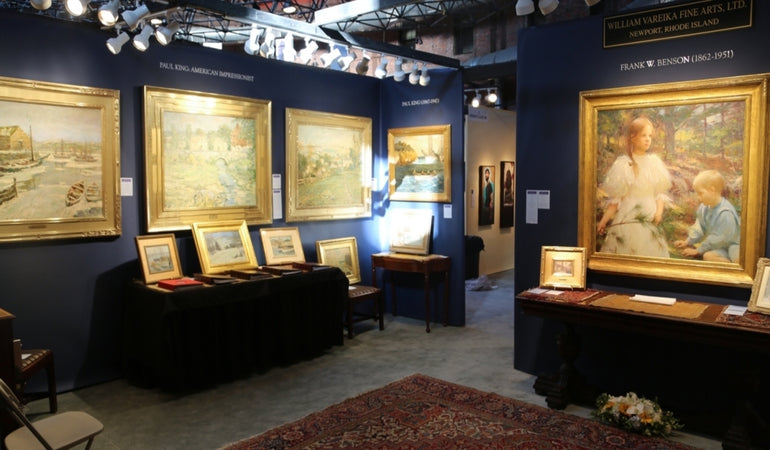Guide to Buying Antique Paintings
In case you're into purchasing at barters – indeed, there are no certifications or discounts there by the same token. It's "purchaser be careful" at each sale house. Regardless of whether, for instance, you end up with a fabrication or reveal harm (as has happened to me every now and then). What's more, however I at times purchase at barters, it's simply because I know precisely the thing I'm doing, and can counterbalance an intermittent error with great buys. Most gatherers don't have this extravagance. You need to likewise consider the purchaser's charge of 20% to 25% that will be added to your cost when you purchase at closeout.
Is the painting a veritable piece?
Maybe the most clear quality that impacts an antique artistic creation's worth is its validness. Is the painting a certified work from a specific craftsman? Or on the other hand is it a duplicate?
Deciding the legitimacy can be troublesome on the off chance that you're not a specialist, yet search for key factors, for example, the accessibility of a signature (and an examination of the mark with a confirmed mark from that craftsman); just as analyzing the work of art to check whether it's been really painted. Feeling the outside of the canvas for the correct surfaces versus the smooth surfaces found in prints and present day fabrication artworks can likewise assist you with deciding a composition's validness. You ought to likewise search for "present day" contacts, for example, staples, plastic casings, or entirely even canvas edges. These are on the whole signs that the canvas is an advanced duplicate.
Who made the Painting?
In the event that the work of art is certifiable and not an advanced print or duplicate, the following effect on the worth is the craftsman who made the artistic creation. Is the mark on the artistic creation readable? How notable was the craftsman? Was the craftsman's work important during their lifetime? The more you can get some answers concerning the craftsman, the better. You should investigate the creator's name on different closeout destinations to check whether any hits come up; from that point, you should have the option to see the past sale costs of sold postings. This will help give you a thought of the general worth of the compositions you've obtained.
A note on distinguishing a craftsman: Don't excuse a craftsman, essentially on the grounds that they aren't acclaimed names like Van Gogh or Lebrun—even the work by lesser realized specialists can be significant to the correct purchaser!
What is the quality and state of the Painting?
The nature of the genuine artwork just as its present condition can likewise significantly affect the number of antique compositions sell for available. Artistic creations that are in incredible condition sell for more than artworks in helpless condition, normally—however you shouldn't limit the significance of the composition quality and subject, all things considered. When in doubt of thumb, representations and scenes both sell very well because of the notoriety of these two types in the antique work of art market.
In view of the above variables, you'll be headed to better distinguishing the estimation of antique artistic creations than any time in recent.
Painting Terms to Know
Collectors should build a basic vocabulary regarding the art of painting:
- Support: the physical structure on which the painting is executed (i.e. wooden panel, stone, canvas, paper, etc.). If canvas was used, a second layer, or lining, may be affixed to the back to later add physical support.
- Preparatory Layers: in the case of a painting on canvas, a product made of gelatin or glue – known as a size – is used to influence the fabric’s absorbency. A primer made from a mixture of plaster or chalk and water prepares the support to hold the paint. A final white basecoat layer of gesso is often applied before painting begins.
- Tempera: best represented in the luminous paintings of the 14th and 15th centuries, the pigment is mixed with water and egg.
- Watercolor: made of finely ground pigment bound with gum arabic or glue, its application can appear both transparent and opaque. The most common opaque watercolor material is gouache.
- Oil paint: first widely adopted by 16th-century artists for its transparency, ease of manipulation, and rich colors. It can produce an incredibly smooth surface but can also be mixed with sand and other coarse materials to create texture. Oil paintings can take days, months, or even years to dry depending on the thickness of the paint as well as its chemical makeup.
- Acrylic paint: introduced in the 1950s, acrylics were quickly embraced for their ability to look as matte as gouache or as translucent as oil paint. They are bound with a synthetic acrylic polymer emulsion.
- Brushes: several brushes of a different shape, size, and stiffness can be used to create a single painting. Some artists choose more unconventional tools, such as palette knifes, rags, sponges, fingers, and spray cans. Well-known Abstract Expressionist Jackson Pollock found that housepainter’s brushes worked best to drip, splatter, fling, and smear paint onto his mural-sized canvases, which he laid out on the floor.
- Varnish: the role of this solid, relatively transparent layer of resin is to protect the paint surface and intensify the colors; however, solutions made with natural materials tend to discolor or darken with age. Conservators can fix this problem by removing and replacing the old varnish with a synthetic product.
- Scale: the size of a painting may speak to its period of origin. Large-scale works grew in popularity at the height of the Paris Salon between 1748 and 1890. The annual or biennial art event exhibited hundreds (if not thousands) of paintings at a time. Limited gallery space and high demand forced many exhibited works to be hung wherever space allowed – even high on walls (and far away from a viewer’s ideal vantage point). As a result, artists increased the size of their supports. Soon artists saw that selling smaller works to the bourgeois for their homes was a more lucrative business. These easel paintings maintained their ranks until the Abstract Expressionists circled back to large-scale canvases
- Markings: artist signatures and dates of completion may be found on either the front or back of paintings. These markings help establish authenticity, but not all artists sign their work. Therefore, collectors should look at any labels or stamps on the back of the support or its frame. These can provide information about the origin and age of the artist’s materials as well as about previous sales and owners.
 BUY NOW, PAY LATER. Starting at 0% APR
BUY NOW, PAY LATER. Starting at 0% APR 

